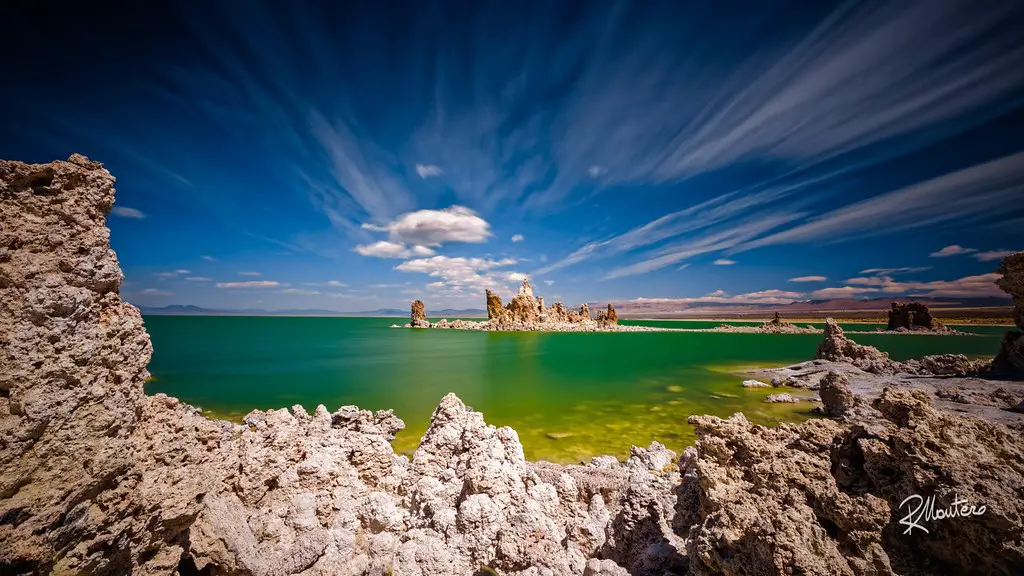Is Lake Michigan Losing Water
Lake Michigan is the second-largest of the five Great Lakes of North America. It is also the only one of the Great Lakes completely within the United States. It covers an area of nearly 22,000 square miles and is the largest lake by surface area in the contiguous United States. Lake Michigan is a popular recreational destination, but there are concerns about whether it is losing water.
The Current State of Lake Michigan
Currently, the water levels in Lake Michigan are down. According to the US Geological Survey, the most recent measurements show that it has dropped to its lowest levels since 2013. The drop in levels is mostly due to the prolonged dry weather that characterized much of the Great Lakes region since 2019. Not only did the levels in Lake Michigan drop significantly, but other Great Lakes, such as Lake Ontario, also saw significant drops in water levels.
Impacts of the Water Level Drop in Lake Michigan
One of the biggest impacts of the drop in water levels in Lake Michigan is the disruption of shipping. When the lake is shallow, ships can get stuck in certain areas, causing delays or making it impossible for them to transport goods as usual. This can have a significant economic impact, as it can be very costly to move goods. The same is true for recreational activities in the lake. When the water is lower, the waterways can be more dangerous and the risk of boat damage increases.
How the Lake’s Water Level Could Be Lowered Further
Water levels in Lake Michigan are not only impacted by drought conditions. They can also be affected by other factors, such as changes in precipitation and water withdrawals for purposes such as agricultural irrigation. In fact, a recent study from the University of Michigan found that water withdrawals from the lake could be affecting the lake’s levels, adding an additional 25 percent to the drop in water levels over the last two decades.
What Can Be Done to Address the Issue?
The most obvious solution to address the issue of lake levels is to reduce water withdrawals. This could be achieved by better water conservation measures, such as limiting water use or instituting better water management policies. However, this would involve the cooperation of numerous stakeholders, and so it can be a difficult process to undertake. In the meantime, it is important to continue to monitor the water levels in the lake so that we can prepare for any future drops.
What Is the Long Term Outlook for Lake Michigan?
The long-term outlook for Lake Michigan is uncertain. The most recent data shows that it is experiencing a drop in water levels, but it is unclear whether this trend will continue or if the water levels will stabilize. There is some indication that the levels may start to rise in the near future, but the true impact of climate change is still unknown. In the meantime, it is important to continue to monitor the lake’s status and take sensible steps to ensure its health.
What Are Some of the Benefits of Lake Michigan?
Lake Michigan is a vital resource for the many communities that rely on it. In addition to providing recreation and transportation, it is also a major source of drinking water for millions of people across the Great Lakes region. In addition, it provides habitat for numerous species of fish and wildlife. To keep these benefits, it is important to ensure that the lake’s water levels are maintained at a healthy level.
What Are the Potential Consequences of Lake Michigan’s Water Level Drop?
The consequences of Lake Michigan’s water level drop can be far-reaching. In addition to the disruption of shipping and recreational activities, the drop can also lead to an increase in erosion and sedimentation. This can alter the lake’s ecology and impact its ability to support fish and other wildlife. It can also have an impact on the lake’s water quality, which can affect the health and safety of both people and wildlife.
What Are Some Ways to Improve Water Management?
Improving water management is an important step to ensure the health of Lake Michigan and other Great Lakes. This can be achieved by implementing better water conservation measures and by developing systems for better water control and monitoring. Additionally, it is also important to encourage and support sustainable agriculture practices, as this can help reduce water withdrawals from the lake.
What Is Being Done to Protect Lake Michigan and Its Ecosystems?
There are numerous organizations that are working to protect Lake Michigan and its ecosystems. These include NGOs like The Nature Conservancy, which works to restore habitats, protect species, and promote sustainable agricultural practices. Additionally, governments at both the state and federal level are implementing measures to protect the lake and its resources. These measures, combined with citizen awareness and education, are vital for the long-term health of the lake.
What Can Be Done to Ensure Lake Michigan’s Sustainability?
The key to ensure Lake Michigan’s sustainability is to take proactive steps to protect it. This includes reducing water withdrawals, limiting agricultural and other pollutants, investing in better water management, encouraging sustainable agricultural practices, and educating citizens on ways to conserve water. Additionally, it is important to continue to monitor the lake’s water levels and take action when necessary to protect the lake’s health.


